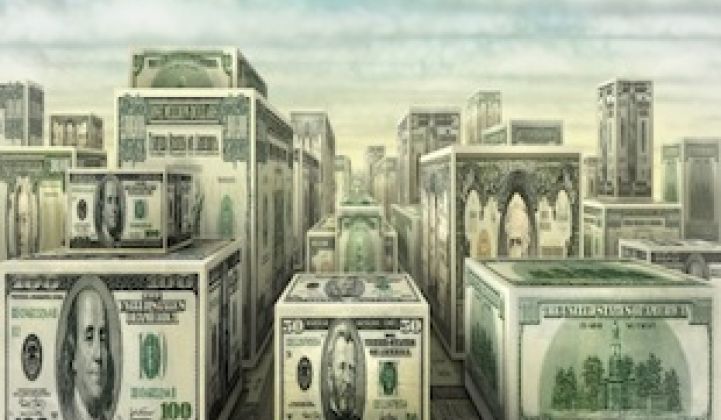For the past few years, we’ve been covering the saga of FERC Order 745, the 2011 federal ruling that raised revenues for demand response providers across the country, only to be overturned by a federal court this summer, putting the promise of future markets in doubt.
Last week, the U.S. Court of Appeals in Washington, D.C. rejected a request from the Federal Energy Regulatory Commission and the states of Pennsylvania, Maryland, and California to rehear the case. That means that FERC and the states, as well as demand response industry players, will have to face off in the Supreme Court against the power generator companies that brought the complaint, if they’re to pursue a legal victory.
Meanwhile, power generator FirstEnergy Corp. has asked the court to consider expanding its review of FERC Order 745, which dealt only with the small amount of demand response operating in so-called “economic” grid markets, to cover the much larger capacity markets as well.
These are all challenges for the demand response industry. But according to David Brewster, president of U.S. DR market leader EnerNOC, they pale in comparison to the proven benefits of managing demand to meet grid needs -- and the state-by-state regulatory changes that are pushing it to the masses.
“At the end of the day, the success of DR has been the success of about twelve years of cooperation between state and federal governments, and it has led to billions of dollars of savings per annum, in reducing consumers bills,” he said in a Thursday interview. A report on Mid-Atlantic grid operator PJM showed that energy efficiency and demand response saved $11.8 billion in electric bills last year, a figure that’s projected to grow to $16 billion this year.
“I am confident that no matter how this shakes out, the value of DR will be maintained,” he said. “A legal technicality won’t put the genie back in the bottle.” He likened the power generators’ legal actions to “hotel lobbies trying to kill business models like Airbnb,” or taxi companies trying to get regulators to restrict ride-sharing startups like Uber.
It’s a bit more complicated than that, of course. FERC Order 745 called for grid operators to pay demand response the full market price, known as the locational marginal price (LMP), it pays generators for the electricity they produce, in both real-time and day-ahead markets. Generators and industry groups like the Electric Power Supply Association, which brought the challenge to FERC Order 745, have argued that LMP is too much to pay people for turning down power use, compared to the costs of delivering the same amount of real energy from a power plant. The District Court found in a 2-1 decision (PDF) that FERC had overstepped its authority over the states by setting pricing policy.
So far, different grid operators have taken different approaches to implementing the order, with PJM the furthest ahead. PJM did see demand response payments rise considerably as a result, but only for the large commercial and industrial customers savvy enough to play in the economic DR markets. Now that the order has been vacated, just how they’ll unwind or alter the programs they’ve set up is an open question.
EnerNOC only got about 2 percent of its roughly $1 billion in revenues over the past three years from the economic markets that will be affected by the court’s decision on Order 745, Brewster said. Still, the company is hoping FERC will take the case to the Supreme Court, since “we believe that demand response is integral to the competitiveness of wholesale markets. I don’t see how you have a competitive market when you have a playground for generators.”
The bigger effects will be in the future, as these economic demand response markets grow in significance. In its latest report, U.S. Demand Response Market Outlook 2014, GTM Research projects that losing Order 745 will reduce U.S. demand response industry revenues by about $4.4 billion over the next decade, from a relatively tiny portion of overall revenues today to nearly one-quarter of projected revenues by 2023.

As for the threat to the much larger capacity markets, EnerNOC is keeping an eye on FirstEnergy’s legal challenge, Brewster said. Still, “you have one generator lobbying in one complaint to PJM about capacity markets -- I’d describe this as the last flick of the tail of the dinosaur.”
“I think generators need to be careful about what they wish for,” he added. As each state or region grapples with how to fill the hole that vacating FERC Order 745 has left in their planning, states like New York and California are reworking their entire approach to distributed energy resources, including demand response, in ways that could end up opening up more opportunities.



